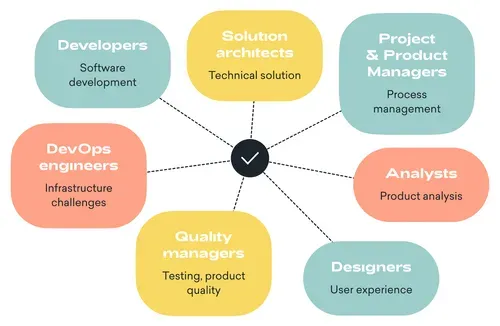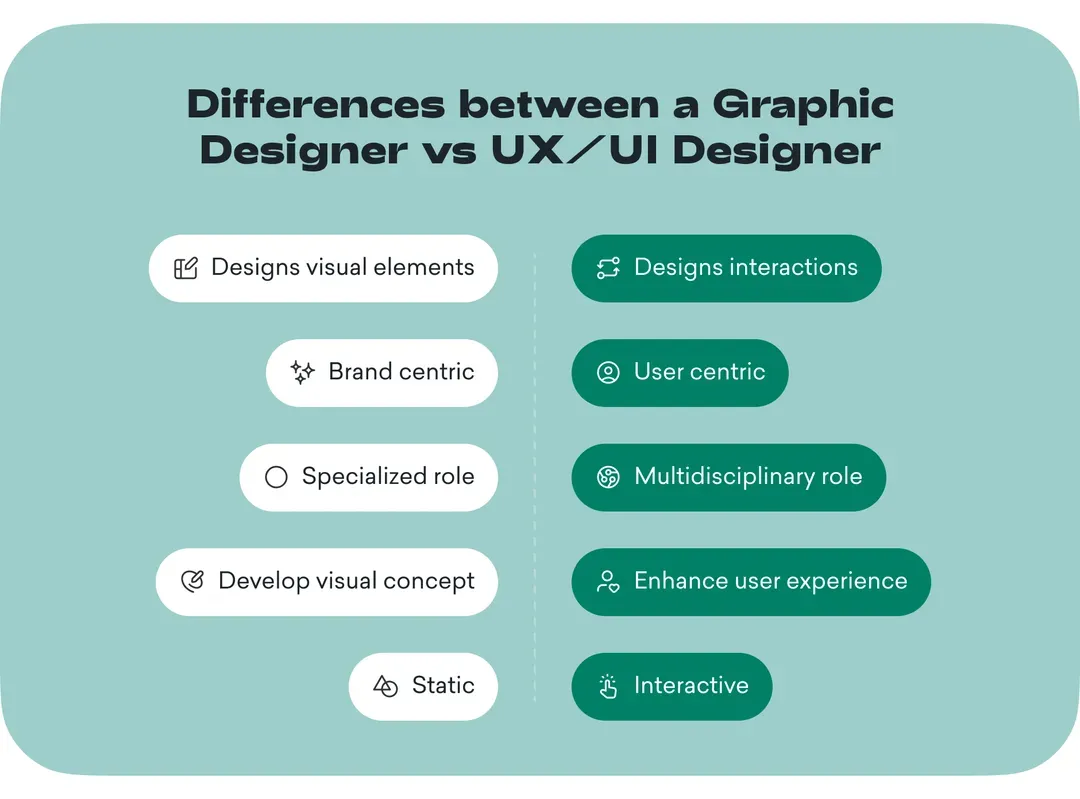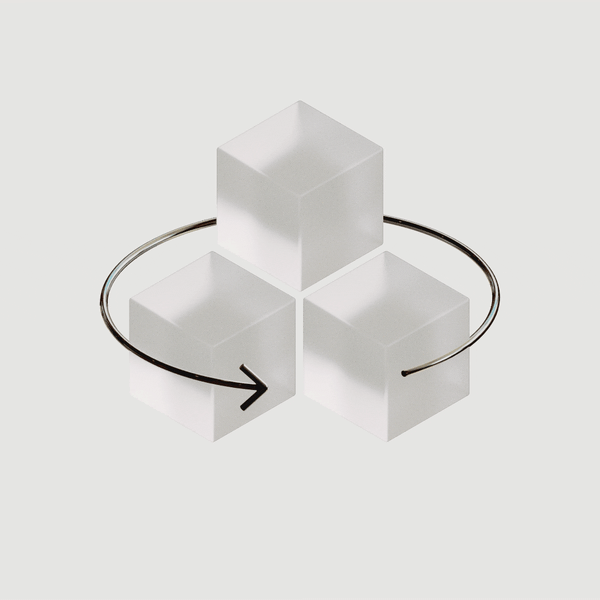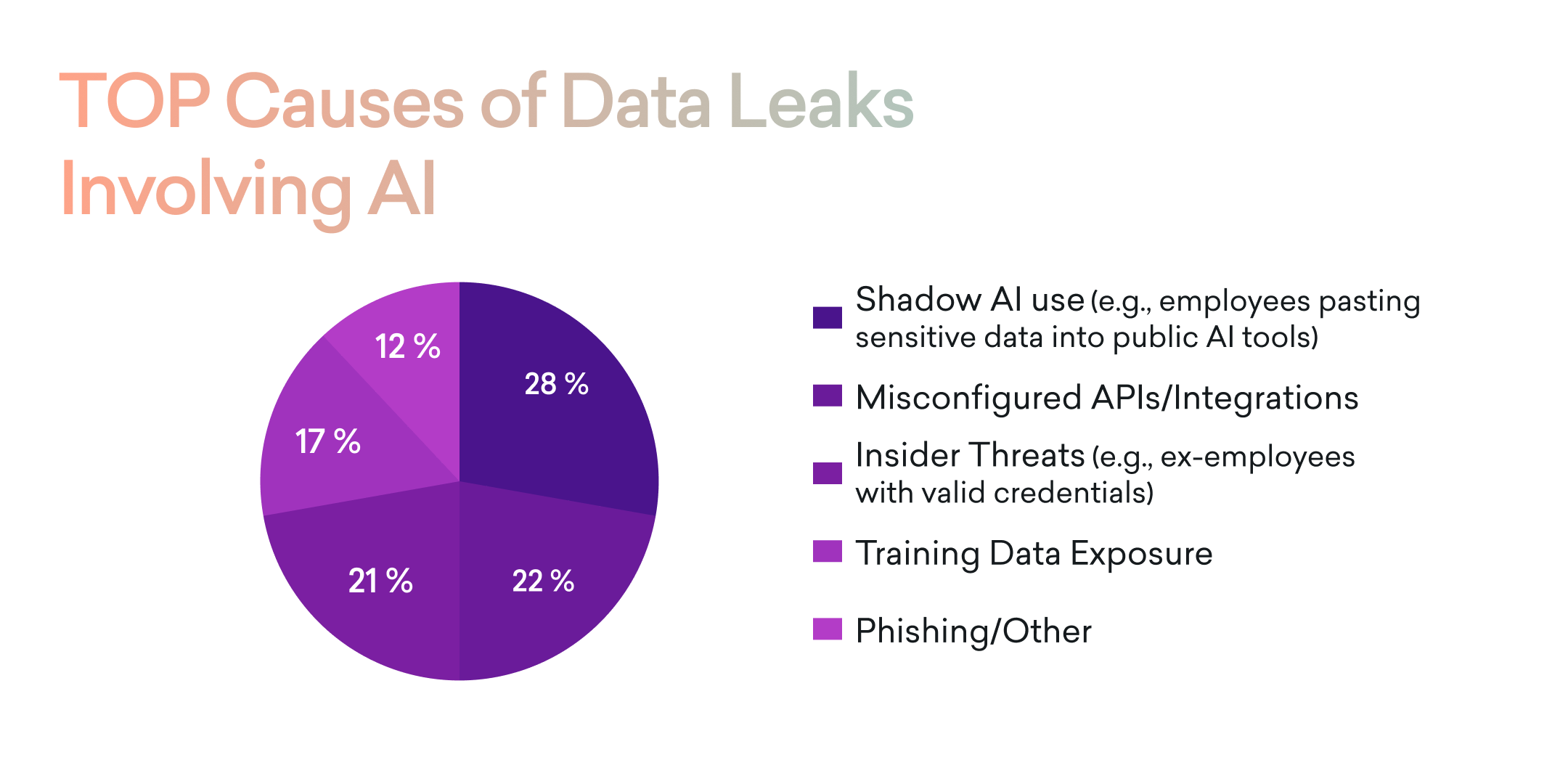Software product development is a challenging discipline with a clear goal: to deliver a certain product with the help of information technology in the best possible quality and of the greatest possible benefit. All within a defined time and budget, of course.
Building quality products is impossible without a solid partnership between the client and software vendor. I’ll explain why this aspect is critical and share some practical product development tips in this article.
I’ll also walk you through the stages of the product development process, and give you an opportunity to get actively involved in one of them.
Sounds interesting?
Let’s dive in!
Before You Kick Off The Product Development Process
The very first step of the process is defining a clear product idea and selecting a quality product development company.
Once you know exactly what kind of product you want to develop, you’ll need to team up with an experienced product manager to discuss your vision. Remember that it’s you, the client, who’s at the heart of the process- you have the best understanding of your product and a plan for its future.
The product manager will help you translate your vision into reality. Together, you will start with the preparation phase which can include outlining implementation plans and defining product roadmap.
However, the phase might also reveal potential risks, such as low market demand. A good product manager will let you know how much potential your product has and if there is enough of a niche for it to address.
Pro Tip
Don't be afraid to communicate openly with your product manager!
Remember that you can base your cooperation on an NDA contract that guarantees confidentiality on both sides.
After all, the more information you share with your product manager about your business, product, and plans, the more fruitful the collaboration. The product manager will then have a better understanding of your vision, and will be able to incorporate it into every stage of product development. This, in turn, will make the whole process much more efficient.
For example, if you want to go global with your project, it’s a good idea to plan for multiple languages, even if at the beginning you will be using just one.
If you want mobile development, then according to the plans for the future, you can either go with multi-platform development such as Flutter (in the case of a simple application that will remain in a defined scope in the long term) or with native platforms such as Android or iOS (in the case of a complex application with 3rd party integrations).
All of this proves just how important it is to share your full product vision with the product manager.
How Does Software Development Work In Practice?
As mentioned above, a solid, trusted partnership between the client and a product development company is essential to building a successful product.
Here’s what the software product development process consists of:
- The initial stage - your target audience group, value proposition, and high-level user journey are defined, market analysis is specified, product design is prepared, research is done, and solution concept is defined
- The development stage - the technical preparation of the project starts, the infrastructure is created and the actual development and testing begins
- Pilot stage (recommended) - a pilot for beta users is launched which is later transformed into a live product for everyone
- Maintenance stage - once the project is completed, you need to take care of it, either by maintaining it or developing additional features
The project may involve multiple experts, such as:
- Developers (many platforms) - responsible for software development
- Quality managers / testers - take care of testing and the overall product quality
- Solution architects - define the most appropriate technical solution based on the product requirements
- Analysts - define the foundation of the product and prepares the specifications
- UX/UI designers / graphics - prepare the visualisation of the product with the user experience in mind
- DevOps engineers - if the solution is complex, infrastructure experts need to be involved to take care of the infrastructure, set up proper monitoring, prepare the system for a heavy load, etc.
- Project/product managers - collaborate directly with the client and manages the team to complete the project effectively
Pro Tip
Make sure you work with people with different areas of expertise!
Involving proper experts at the right time will make the product development process much more efficient, and help deliver a better solution.
Every single expert offers a unique, valuable perspective. For example, UX/UI designers don’t just deliver visuals, but produce designs aligned with user behavior which facilitate product adoption.
Quality managers bring a structured, methodical approach to uncover hidden bugs. They provide essential guidance to developers by pointing out error types, locations and circumstances under which they occur. Thanks to their input, developers can fix the errors early on and proceed with building further functionalities. Quality managers’ focus on detail makes them responsible for deploying a stable product to all users.
Speaking from experience, involving the right people at the right time is absolutely essential from a strategic point of view. Each product is different and might require support from different experts. So, make sure you agree with your product manager on what experts you’ll need, even if just for a single consultation.

Software Product Development And Its Stages
We’ve outlined the stages of product development above. Now, let’s dive deeper into each of them and see what exactly they consist of:
1. The Initial Stage
Although critical, the initial phase is often neglected. It includes mapping out of the product definition, specification, design, and solution concept. All of these elements should ideally be based on real user needs verified by a thorough market research.
For the most effective product development, you need a well-written specification covering two levels:
- Business level, where the use cases are defined
- Technical level, where the approach to the development of use cases is defined
If you’re building a mobile application, web solution, game or any other product requiring a user interface, it is also necessary to have a visualisation - at this stage, you’ll need the support of a UX/UI designer who will prepare intuitive designs making your product easy-to-use.
In the initial phase, you should also dedicate time to market research. It will help you define target groups, understand their needs and find correlations between the two. The data you’ll collect will show the real market demand and user expectations.
Unfortunately, due to its cost, market research is often overlooked. Yet, it is essential to the success of your product. It will help you to not just discover and understand your target market, but also better allocate resources, making the product development process more efficient. It can also help you gain advantage by aligning your solution with user expectations better than the competition.
Remember that it is not always necessary to commission the research from a large agency. You can conduct the research yourself using a basic questionnaire that will help you collect the essential information.
If you create a questionnaire yourself, make sure to structure it properly with your target audience in mind. Set a clear number of respondents you want to reach and decide whether you’re going to survey the general public or experts only.
Don’t include too many questions and put the most important ones on top - this way, you’ll get the most critical data while the respondents are still paying attention.
Here’s an example of a questionnaire that one of our partners is currently using for market research - feel free to use it as inspiration, and take the opportunity to actively participate in the initial phase by helping us with your opinion!

The market research insights should be discussed with a solution architect who will recommend the best technical solution based on your brief.
It is key to define the right technical solution at the very beginning of the process, so don’t be afraid to share your vision with the architect. They will present the right approach, and ensure that no major technical changes will need to be made halfway through the project. They will also advise on a security approach that will best help protect your solution.
Pro Tip
Very often, the roles of a graphic designer and a UX/UI designer are misunderstood.
A graphic designer is a visualisation expert who works on user interface. A UX/UI designer focuses both on user interface and user experience.
UX/UI designers combine the in-depth knowledge of design principles with an understanding of user behavior to create a user-friendly experience. They put the elements of your product design into an order that’s aligned with user behavior - as a result, your application will, for example, have appropriately placed buttons or optimized number of clicks leading to a goal completion.

2. The Product Development Stage
The next stage is the actual development of the product that should start with the preparation of the infrastructure.
The preparation includes an efficient setup of the development process that could automate the frequently repeated operations to help save time and move forward faster. It involves setting up the environment/s, infrastructure, security and monitoring in preparation for the actual development.
The development of your product is usually completed in parts. These are delivered in shorter time intervals called sprints. A single sprint starts with planning where tasks for a given time period are defined, and later introduced and developed. Developers meet regularly to address technical issues and potential complications at regular short meetings called standups.
Usually, before the end of a sprint, developers prepare a testing version of the product. The QA team puts it to the test and reports any malfunctions and bugs that the developers need to fix.
The way testing is done depends on the type of your product. In the case of a mobile application, developers have to build code and transform it into an installation package that the tester later downloads, installs, and tests. In the case of web solutions, developers need to deploy the code into the right environment where tests can be conducted.
Depending on the team size, product type, and delivery date, testing can be done in batches, continually, or automatically.
The development stage is one in which you can get involved. After the team completes the development and testing of the demo version of your product, they will present the progress to you. Once this is done, you can examine the features yourself and share feedback with the team. It is best to do product demos on a regular basis to monitor the growth of your product and actively test it yourself.
This collaboration between you and the development team improves the product. You can consistently get an insight into what's been developed and at the same time consult future features or validate best practices with the experts to get your priorities right.
The last stage of testing involves deploying the solution to the right environment where it can be tried by real users.
A sprint ends with a retrospective where the team discusses the ways to improve the solution and collaboration, and plans improvements for the next sprint.
Pro Tip
Testing and deployment are two important areas where automation can be introduced. Doing so usually means a higher effort at the beginning, but subsequently a greater benefit in the future. Manual, repetitive activities can then be solved with one command line or within one click of a button which saves your team’s time and gives them space to focus on other product areas.
On the other hand, your team should only automate where it makes sense. For example, automated deployment, automated login and logout scenarios are usually more efficient.
But because automated tests are performed without human intervention, they cannot replace human evaluation. So if your solution contains functionalities that cannot be accurately described, automating them might not be the best approach.
The best practice is to let DevOps engineers decide what stages of the product development process could be automated and with what tools for optimal results. Other experts will surely find something to automate too, but please always consider added value before introducing automation.

3. The Pilot Stage
I highly recommend starting with a pilot/beta version of your product before full launch.
The opportunity to test the product with several real users and getting their feedback is key to understanding if and how your solution resonates with the target market. The pilot stage also allows you to assess the stability of your product and catch any remaining bugs early, when their impact is still relatively small.
Once your product has been beta tested, it’s time for the big release!
Pro Tip
If you’re not short on time or budget, always plan for the pilot stage. The insights about usability and functionality it provides are invaluable, and can save you a lot of headaches in the long run.
If you don’t have resources to run a pilot, use the data you gathered through testing, and openly communicate to users any shortcomings like missing features. This way, you’ll set proper expectations and minimize the risk of potential complaints.
4. The Maintenance Stage
After deployment into production, the product is available to potential customers. At this point, you can either let it run or continue with developing further functionalities. It is highly recommended to closely monitor the product’s performance and user behavior with analytical and monitoring tools.
Analytical tools help us understand user behavior and therefore better tailor in-demand functionalities - and even marketing campaigns! Monitoring tools, in turn, allow us to keep an eye on the infrastructure and take preventive measures against any crashes, so we can either stop them before they occur or, if they do happen, introduce fixes before the errors affect a large group of users.
In the maintenance phase, you can also do another market research to determine what other functionalities might be a good addition to your product.
Pro Tip
When the product development process comes to an end, two things are often overlooked - documentation and support.
Proper documentation should be an integral part of every solution. As people change teams and projects, the documentation is often the only remaining source of truth about the product - that’s why it should be updated on a regular basis and stored safely.

Support is essential in the post-release phase, as it provides hands-on help with any product issues or upgrades. In the best case scenario, you should have onboarded a dedicated team that is ready to jump in whenever help is needed in the development stage. This minimizes the impact of production issues on your users.
Otherwise, if no further development or support is available once your product is released, you risk running into technical or regulatory issues. The IT world is rapidly evolving - there are new technologies or privacy and security regulations that require your product to be regularly updated. Besides, even the most stable solutions need proper maintenance.
So, always keep in mind the future of your product and the fact that it is going to require good care and upkeep.
The Takeaway
Summing up, when it comes to the product development process, the partnership between the client and the provider is absolutely essential to successfully turning your idea into a product.
Do not underestimate the importance of preparation, and always do proper research, involve UX/UI designers, and openly communicate your vision - all these aspects help to define the right architecture of the solution.
Remember that the developers will deliver your product in smaller bits, so stay in touch with your product manager to regularly monitor progress and ensure that you continue on the path you want to take.
Before you launch, test your product among a narrow group of users to collect feedback and detect any errors. And don’t forget about documentation and support that will help keep your product cataloged and up-to-date.
The best part of the whole product development process is the fact that you can create solutions that save time and money, make processes more efficient, and overall contribute to making our lives easier!









.png)


.avif)